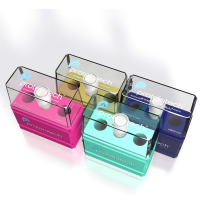Electron Probe X-Ray Microanalysis: A Quantitative Electron Microscopy Technique for Measurement of Elements and Water in Nervous Tissue Cells
互联网
716
Although structure and function of the major cells comprising nervous tissue have been studied extensively, very little detailed
information exists concerning subcellular distributions of water and such elements as Na, K, Cl, and Ca. This information
gap limits our understanding of cell physiology since transmembrane gradients of corresponding ionic species are critically
involved in modulating the metabolic and signaling behavior of neuronal and glial cells (1
). Moreover, substantial evidence indicates that neuropathic conditions induced by a variety of injury events (e.g., xenobiotic
intoxication, disease processes, trauma) involve shifts in subcellular ion composition and volume regulation (2
–4
). Several techniques (e.g., atomic absorption spectrophotometry, ion selective microelectrodes, ion-sensitive fluorescent
dyes) have been used to measure tissue or cellular levels of elements (ions) in normal and injured nervous tissue. In our
laboratory, we have used electron probe X-ray microanalysis (EPMA) to investigate the role of ion and water deregulation in
different central and peripheral neuropathies (5
–7
). EPMA is a quantitative electron microscope technique that measures both water content (percentage water) and total (free
plus bound) concentrations of biologically relevant elements (e.g., Na, K, S, P, Cl, Ca, and Mg in mmol/kg dry or wet weight)
in cellular morphological compartments. Unlike other methods of ion/element measurements, EPMA permits simultaneous determinations
of multiple elements and allows optical differentiation of nervous tissue cell types and their processes (e.g., nerve and
glial cell bodies, dendrites, axons) with subsequent analyses of submembrane regions or organelles (e.g., axoplasm, mitochondria).









